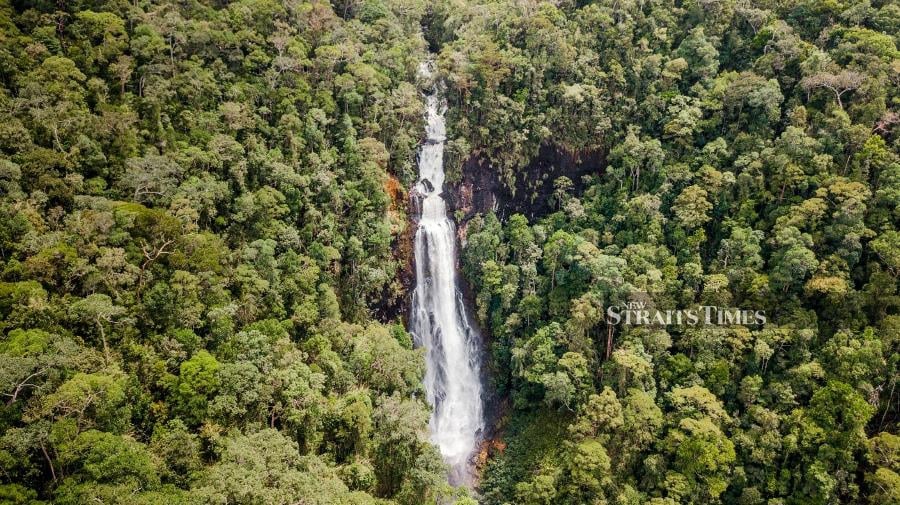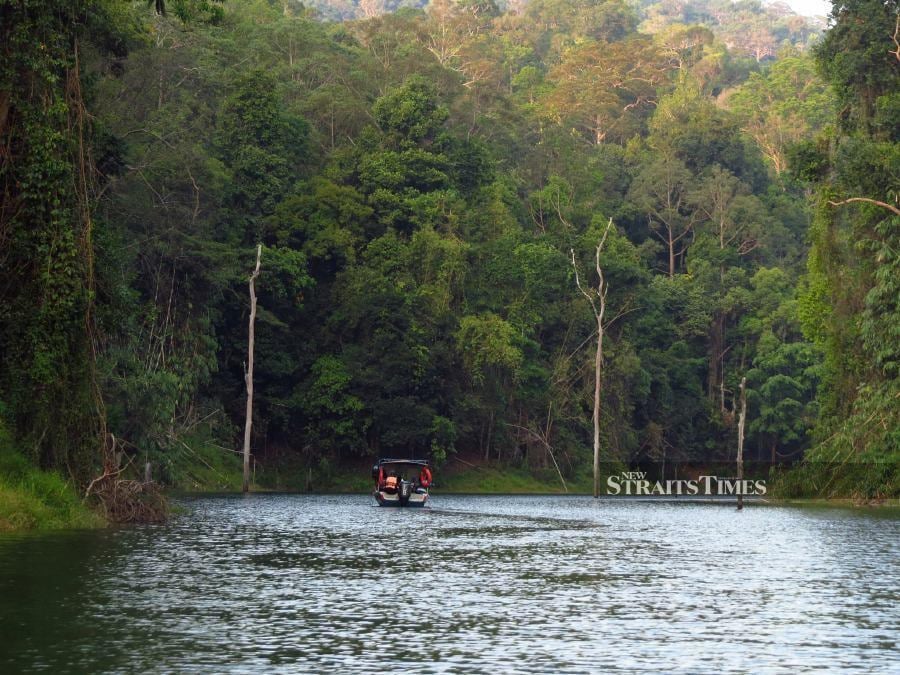AS we celebrate World Rainforest Day, let's marvel at Malaysia's extraordinary rainforests, among the planet's oldest at 130 million years. These ancient landscapes once echoed with the footsteps of dinosaurs, showcasing nature's resilience and timelessness. Today, they remain vibrant havens of biodiversity, essential to our planet's health and future.
Malaysian tropical rainforests are globally renowned for their antiquity and exceptional biological diversity, earning Malaysia recognition as one of the world's 12 megadiverse countries.
The country remains committed to maintaining 50 per cent forest cover compared to its total land area, in line with its commitment at the 1992 Earth Summit in Rio de Janeiro, Brazil.
Natural Resources and Environmental Sustainability minister Nik Nazmi Nik Ahmad stated that Malaysia currently has 54.58 per cent forested areas and tree cover, equivalent to 18.05 million hectares.
Our tropical rainforests form a diverse tapestry of ecosystems, including mangroves along the coast, peat swamps in wetlands and expansive terrestrial landscapes. Predominantly, the latter is characterised by lowland dipterocarp forests and hill forests, all abundant in biodiversity.
TREASURE TROVE

Rainforests stand as earth's ancient ecosystems, many persisting unchanged for over 70 million years. Despite covering only six per cent of the planet's surface, they host an astonishing diversity of life.
These lush habitats are home to more than half of the world's plant and animal species. Within just 10 square kilometres, one can encounter up to 1,500 flowering plants, 750 tree species, 400 bird species, and 150 butterfly species! Such richness underscores their vital role in global biodiversity and their profound impact on our planet's ecological balance.
@nstonline #NSTsundayvibes It's World Rainforest Day! Let's protect Malaysia's 130 million-year-old rainforests for future generations. #NewStraitsTimes ♬ original sound - NSTonline
In Malaysia, these verdant landscapes provide vital sanctuaries for iconic species such as tigers, tapirs, clouded leopards, elephants and a myriad of other unique creatures.
These animals rely on the complex web of life within Malaysian rainforests for their survival, illustrating the critical role these habitats play in preserving biodiversity on both a local and global scale.
ESSENTIAL FOR OUR SURVIVAL
Why should we care about rainforests, especially when they seem so distant from our daily lives? It's easy to feel disconnected, but the truth is, our lives are intricately linked to nature, including Malaysia's tropical rainforests.
These lush forests, although geographically far, play a crucial role in our global ecosystem. They're the lungs of our planet, producing oxygen, storing carbon dioxide and regulating the climate. By absorbing carbon dioxide and releasing essential oxygen vital for our survival, forests significantly contribute to stabilising the planet's climate.
Additionally, rainforests influence the global water cycle by releasing water vapour through transpiration, which forms clouds and eventually leads to precipitation. This process creates a continuous cycle where water generated in rainforests travels across continents; scientists hypothesise that moisture originating from African forests can reach and replenish rainfall in the Americas!
ANCESTRAL TERRITORY
For millennia, indigenous communities have coexisted harmoniously with the rainforest, relying on it for sustenance, shelter and traditional medicines. However, the arrival of oil and logging companies often spells disaster.
These industries not only clear vast swathes of forest, but also introduce diseases to which indigenous peoples have no immunity, posing a severe threat to their survival. Additionally, forced displacement from their ancestral lands disrupts their way of life, making it challenging for them to thrive in unfamiliar environments.
This disruption not only jeopardises their cultural heritage, but also undermines their ability to maintain their traditional practices and connection to the land.
CLIMATE REGULATOR
Rainforests act as immense reservoirs, storing water like a vast sponge. The Amazon rainforest alone is estimated to hold more than half the Earth's rainwater. This crucial function begins with rainforest trees drawing water from the ground, which is then released into the atmosphere through transpiration, forming swirling mists and clouds.
The continuous recycling of water by rainforests is vital for sustaining global water cycles, feeding rivers, lakes and irrigation systems. Without this natural process, the frequency of droughts could increase, posing threats such as widespread famine and disease outbreaks.
The interconnectedness of rainforests with global climate regulation underscores their indispensable role in maintaining ecological balance and ensuring water security for communities worldwide.
SOIL EROSION

Preventing soil erosion is crucial, as evidenced by the lessons learnt from past landslides like the Batang Kali tragedy. Rainforests play a vital role by maintaining soil stability through several mechanisms.
Contrary to expectation, rainforest soil itself is often nutrient-poor because nutrients are primarily stored in the vegetation rather than the ground. Trees and plants in the rainforest bind the soil together with their extensive root systems, while the canopy shields it from the impact of heavy rains.
When trees naturally fall and decompose, they release stored nutrients back into the soil, ensuring a continuous nutrient cycle. However, deforestation disrupts this balance.
Removing trees removes the vital nutrients they store, leaving the soil vulnerable. Without the protective canopy, rain can easily wash away unprotected soil during heavy downpours. This runoff contributes to blockages and floods in lowland rivers, while upland rivers may suffer from reduced water flow.
By preserving rainforests, we not only maintain soil stability, but also uphold the intricate ecological processes that sustain water resources and mitigate natural hazards.
RAINFOREST PHARMACY
Did you know that over 25 per cent of today's modern medicines have their origins in plants from tropical forests? Yet, astonishingly, we've only scratched the surface, harnessing the potential of just 1 one per cent of these remarkable plants. Just imagine the possibilities if we could explore the remaining 99 per cent!
We should celebrate Malaysian rainforests not only for their breathtaking beauty and rich biodiversity, but also for their invaluable contributions to global ecosystems and humanity. These ancient forests serve as vital carbon sinks, helping to regulate climate patterns and mitigate climate change.
They're home to countless unique species, many of which are found nowhere else on Earth, and hold immense potential for scientific discoveries and medical breakthroughs.
Preserving Malaysia's rainforests isn't just a matter of environmental stewardship, but also a commitment to ensuring a sustainable future for generations to come, where both nature and people thrive in harmony.





